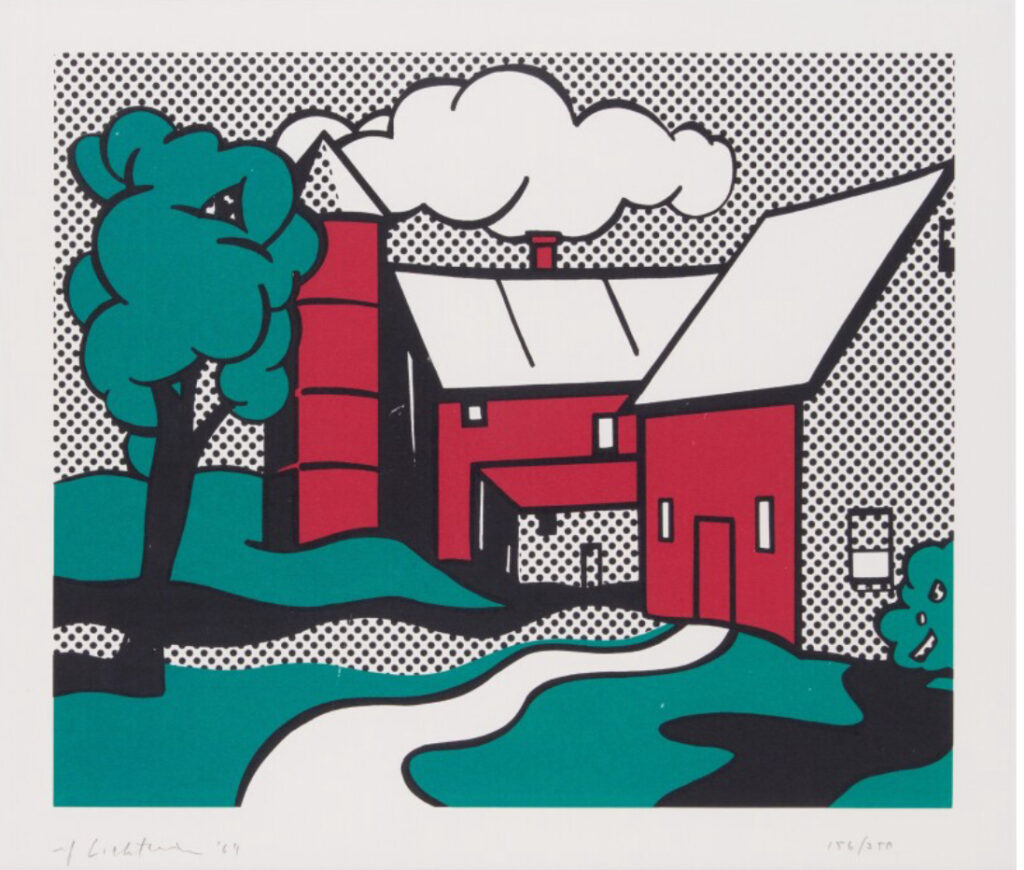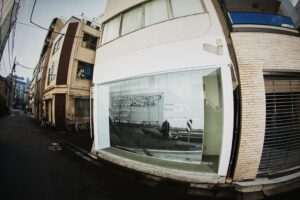
Roy Lichtenstein’s “Red Barn Corlett 89” is a striking piece that highlights his distinct Pop Art style, characterized by bold colors, thick outlines, and a focus on the interplay of high art and popular culture. Created in 1969, the artwork is part of his “Barn Series,” which reflects Lichtenstein’s exploration of the rural American landscape through a lens that flattens and abstracts traditional imagery.
The piece exemplifies his use of Ben-Day dots and primary colors, a technique that Lichtenstein adopted from comic strips to critique and subvert the norms of fine art. In “Red Barn Corlett 89”, the simple geometric shapes and flattened color planes are reminiscent of his earlier works that reinterpreted famous art historical movements, like Cubism and Surrealism, but with a distinct Pop Art twist.
The barn in this series becomes an icon, almost emblematic of the American countryside, yet it’s stripped of its context and transformed into a symbol. The piece is not just a representation of a barn but an interrogation of form, color, and space, reflecting Lichtenstein’s fascination with the visual language of Americana through the lens of industrial production.
“Red Barn Corlett 89” stands as a compelling example of how Lichtenstein blended everyday imagery with the aesthetics of mass media, creating a unique visual language that both critiques and celebrates contemporary American culture.
No comments yet.








